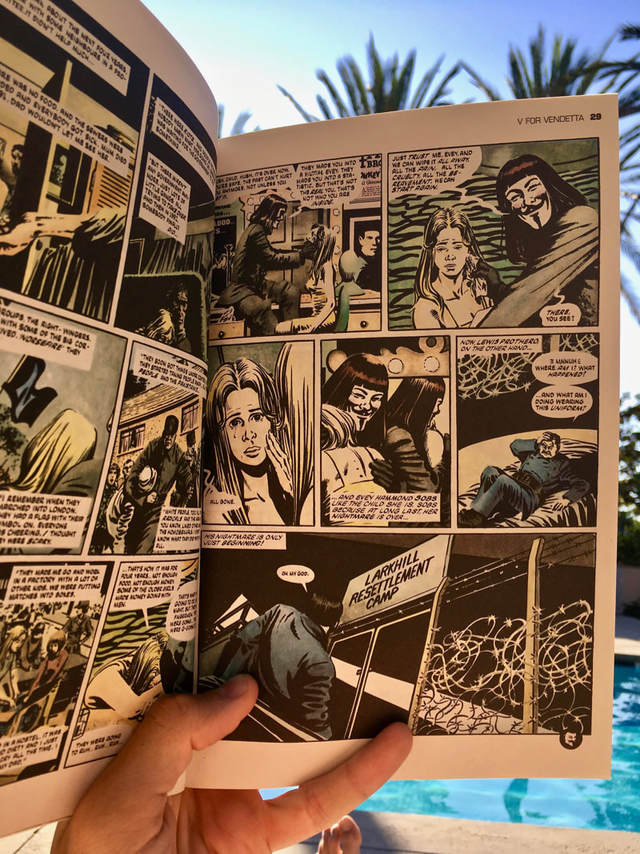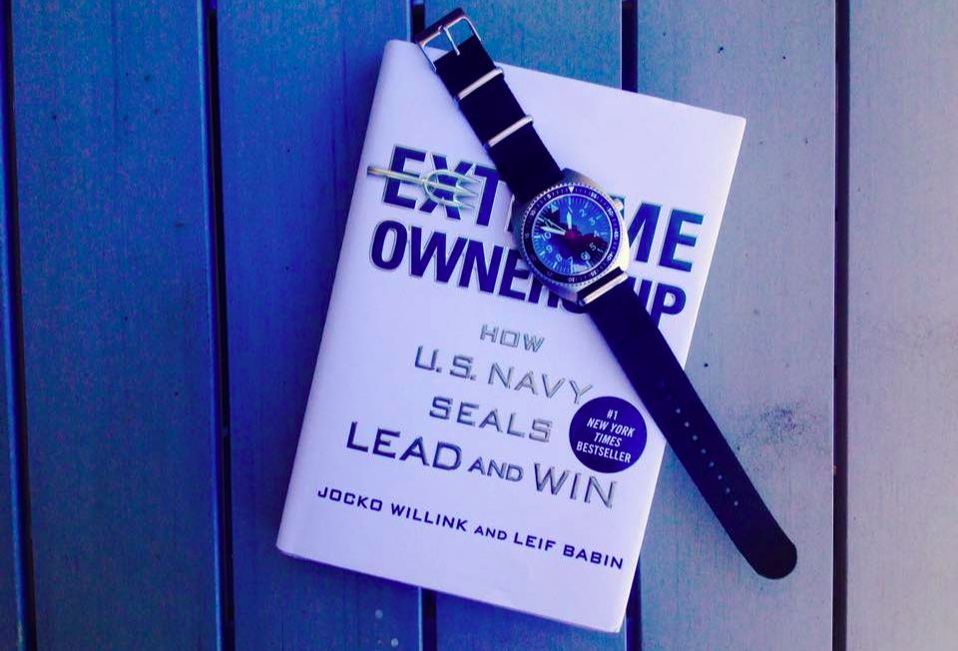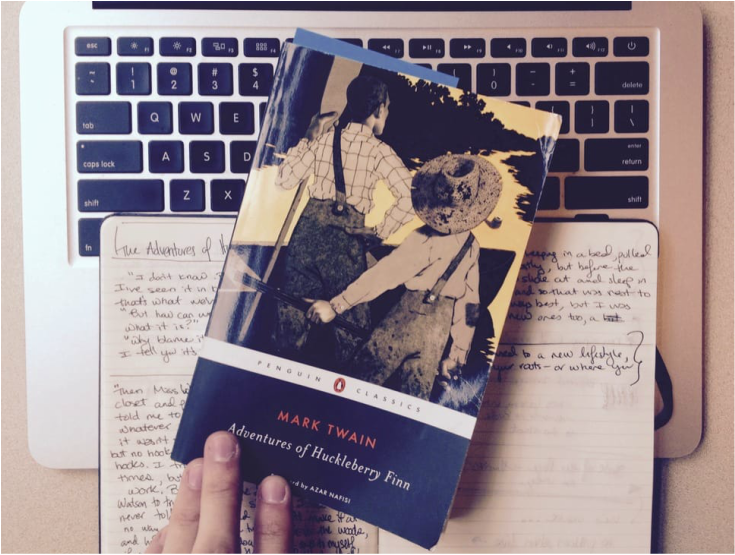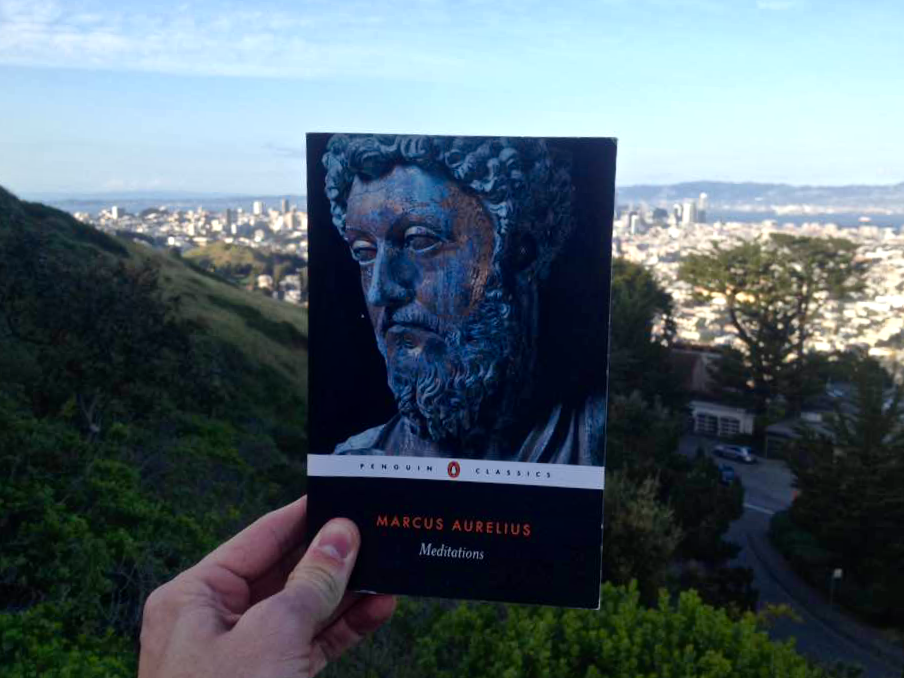Originally published in the fall of 1988 through early '89 via a series of ten black-and-white episodes, V For Vendetta has been reborn since then in brilliant full color—and eventually onto the silver screen. The anarchist hero, V, gracing his iconic Guy Fawkes mask has become a familiar face in pop culture's pantheon.
Since the early 2000s, they've also been worn not just on Halloween but at countless political protests cross the globe by individuals on both the left and the right. The mask, I think to most people, represents rebellion against real or perceived oppressions—with a dash of theatrics and sinisterness mixed in. I've always found this fascinating—that it's adopted by so many different crusaders. And so, I wanted to meet the man behind the mask.
Reading V's legend written by Alan Moore (Watchmen, Miracle Man, The Swamp Thing) and brought to life with the gritty, stylized visuals of David Lloyd was surprisingly philosophical; much more so than the movie adaptation made it out to be. Darker too. The dystopian world V is plotting to bring down—a fascist England that has criminalized various "deviant" behavior and watches everyone via its network of cameras, bugged phones, and patrolling finger-men—was probably my favorite aspect. The villain was embodied via the Supreme Leader and his henchmen, but the power of the system was oozing from every page, on every dimly-lit street corner and in every home's telephone and TV. The sense of dread, not knowing who to trust, if you're being watched, how you'll ever have a private moment or conversation or differing opinion, and the feeling that it was all inescapable—or worse, that people stopped seeing it after a while—was fantastic characterization of the landscape. By building up the system, V's mask shines that much brighter, promising to get the last smile. [JG]
Since the early 2000s, they've also been worn not just on Halloween but at countless political protests cross the globe by individuals on both the left and the right. The mask, I think to most people, represents rebellion against real or perceived oppressions—with a dash of theatrics and sinisterness mixed in. I've always found this fascinating—that it's adopted by so many different crusaders. And so, I wanted to meet the man behind the mask.
Reading V's legend written by Alan Moore (Watchmen, Miracle Man, The Swamp Thing) and brought to life with the gritty, stylized visuals of David Lloyd was surprisingly philosophical; much more so than the movie adaptation made it out to be. Darker too. The dystopian world V is plotting to bring down—a fascist England that has criminalized various "deviant" behavior and watches everyone via its network of cameras, bugged phones, and patrolling finger-men—was probably my favorite aspect. The villain was embodied via the Supreme Leader and his henchmen, but the power of the system was oozing from every page, on every dimly-lit street corner and in every home's telephone and TV. The sense of dread, not knowing who to trust, if you're being watched, how you'll ever have a private moment or conversation or differing opinion, and the feeling that it was all inescapable—or worse, that people stopped seeing it after a while—was fantastic characterization of the landscape. By building up the system, V's mask shines that much brighter, promising to get the last smile. [JG]
|
| WHO IS DAVID LLOYD? David Lloyd has illustrated many other graphic novels including those of the Hulk, Dr. Who, Night Raven, Time Bandits and others. |
| "Good evening, London. It's nine o-clock and this is The Voice of Fate broadcasting..." — Alan Moore, V For Vendetta |
YOU MAY ALSO LIKE


























